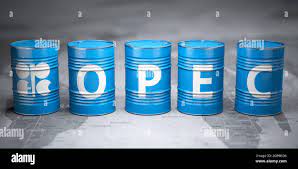Last week, OPEC+ decided to keep current oil production cuts in effect until the end of the year.
The announcement was anything but surprising, and yet crude oil prices fell substantially, sparking suggestions that the OPEC+ cuts may already be activating what many call the cure for high oil prices, which is even higher prices.
But there is a possibility that oil has higher to go still before it begins affecting demand. The question, as always, is just how high. The answer: perhaps a bit higher.
India’s oil minister this week warned about unintended consequences from the OPEC+ cuts, saying it was the right of the OPEC+ producers to decide how much oil they would pump, but they should not be “unmindful of the consequences.”
“And it can become a self-fulfilling prophecy, that the demand will drop because people don’t have the capacity to sustain it,” Hardeep Singh Puri added.
According to Bloomberg’s Julian Lee, demand destruction is already underway. In the United States, gasoline consumption this driving season was 600,000 bpd below the average for 2019, the last pre-pandemic year with what is assumed to be normal demand.
In addition, the latest EIA inventory report showed a substantial build in gasoline inventories, reinforcing a perception of lukewarm demand for fuels. Unsurprisingly, that build was one of the factors that weighed on prices this week.
Yet while demand may weaken in the U.S., it is rising in other parts of the world. China, India, and Brazil, Lee notes, are all witnessing rising oil demand. Only, according to him, this growth needs to be stronger to offset the declines in demand elsewhere.
This, however, would depend on the causes of demand destruction. And when we talk about U.S. demand, it was not prices that destroyed demand—oil was well below $90 per barrel during summer driving season. It could have been inflation, which remains elevated despite consistently high consumer spending. It could have been just one of those years. Meanwhile, oil demand in China is “booming”.
“China’s demand for oil has been supported by record internal mobility, as indicated by robust congestion and domestic flight data,” Goldman Sachs commodity analysts recently said, noting the country’s booming demand for copper, driven by the low-carbon energy industries.
India’s oil demand is also quite robust, despite the government’s concerns about prices, prompted by the fact that the country relies on imports for over 80% of its oil consumption. Despite his warnings about prices, India’s oil minister this week said the country “will manage” even if oil tops $100 per barrel.
This seems to be where most observers see oil heading anyway. The latest to join the $100-per-barrel club was Norway’s Equinor, whose chief economist predicted that “I wouldn’t exclude that we can have prices reaching $100 a barrel,” but added that “that wouldn’t be because OPEC would like it to reach there. I don’t think they are aiming for that price.”
Indeed, Eirik Waerness made an excellent point that others have made in recent days, too. OPEC+ as a whole or Saudi Arabia and Russia are not interested in watching oil prices soar sky-high. They are aware of the nature of the cure for high oil prices. So, as before, what they are doing is a fine balancing act that can keep prices high enough for producers but without killing demand, at least not too much of it.
This is the key issue at stake: can the global economy keep chugging along even as oil rises close to $100 or even above it, or will there be a fallout that would, ultimately, destroy a lot more demand for oil?
For now, it seems the economy keeps chugging along, accompanied by persistent concerns about interest rates, recession, and consumer spending. Meanwhile, forecasts of peak oil demand continue to come in, the latest from Rystad Energy. The Norwegian energy consultancy served a surprise this week by forecasting that oil prices are about to drop sharply thanks to ample supply and a peak in oil demand growth.
This forecast goes counter to observations made by Equinor’s chief economist, who noted that tight production capacity globally was part of the reason why oil may soon top $100 per barrel. It also goes counter to what OPEC has been warning about for years now: underinvestment in new production that would ultimately compromise the global supply situation.
For now, it appears the market is reasonably well supplied despite the Saudi and Russian cuts. But the balance appears to be delicate, with a deficit around the corner, according to most analysts. Once that is official, it will become clear just how elastic oil demand has become in the past couple of years or, alternatively, how inelastic it continues to be. And that might settle the debate about peak oil demand, at least for a little while.

 Iran Energy News Oil, Gas, Petrochemical and Energy Field Specialized Channel
Iran Energy News Oil, Gas, Petrochemical and Energy Field Specialized Channel



